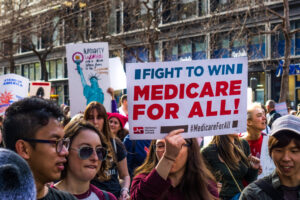
A Quartet of Medicare Enrollment Periods
Speaking of enrollment, you have to be careful not to miss the enrollment period. There are several of these in addition to the seven-month initial period, so you’ll have several chances to do it.
General enrollment is between the 1st of January and the 31st of March, so, for example, if you missed signing up for Part B you can mark these months down in your calendar. In that case, your coverage will begin on the 1st of July.
Why’s it so important to not miss this window of opportunity? Because you will have to pay a 10% penalty for each 10 month period you delay for the rest of your life if you do. There are exceptions for those who are covered by an employer’s plan, including a special enrollment period that lasts for 8 months after you use this coverage. Again, if you miss it, you have to do it during general enrollment.
From the 15th of October to the 7th of December you can enroll for Plan D and Medicare Advantage or, alternatively, you can switch between Advantage and original Medicare. If you’ve already got Advantage then you can switch from it to original Medicare between the 1st of January and the 31st of March.
Outside of these dates, you may also switch to a Part D or Medicare Advantage plan in your area if it has a five-star quality rating.

A Filled Doughnut Hole for Medicare Part D
Seniors who had already enrolled know all about the dreaded ‘doughnut hole’- a coverage gap that ensured you had to pay higher out of pocket costs for your drugs. Luckily, most retirees don’t have to worry about that anymore.
Here’s what you need to know. For 2021 if the program has paid $4,130 for your drugs then you’ll know you’re in the donut hole, therefore you will receive a 75% discount on drugs, both brand-name and genetic. Of that 75%, prescription drug manufacturers hep with 70% while the insurers pick up 5%, leaving you with the remaining 25%.
If your out of pocket costs reach $6,550 then you’re in what experts call catastrophic coverage.
Deductibles paid before you entered the hole, as well as the 25% you contributed and the 70% from pharmaceutical companies, count towards that annual maximum, $6,550.





























































